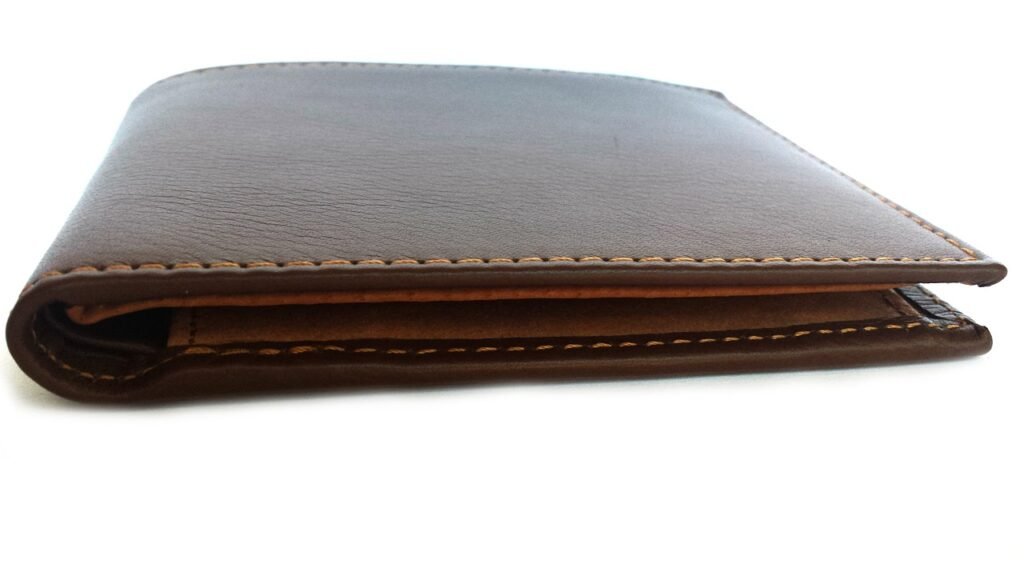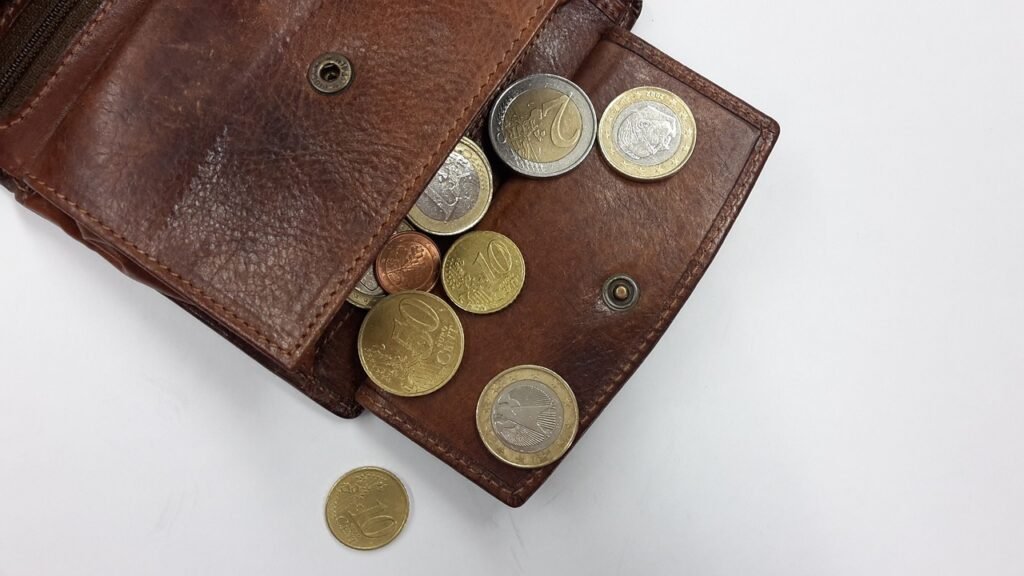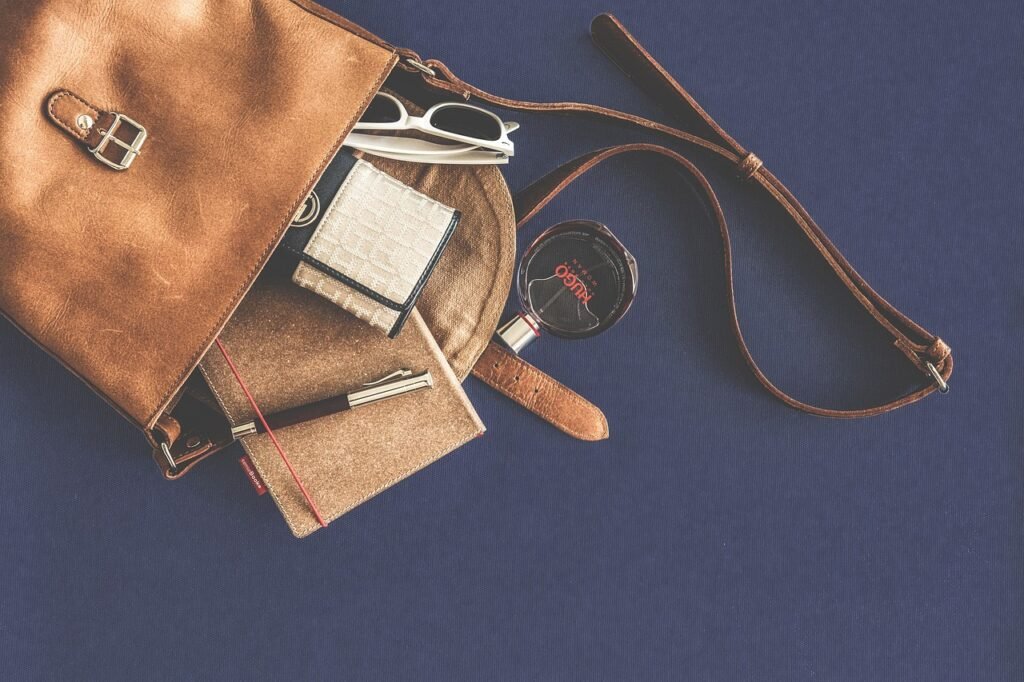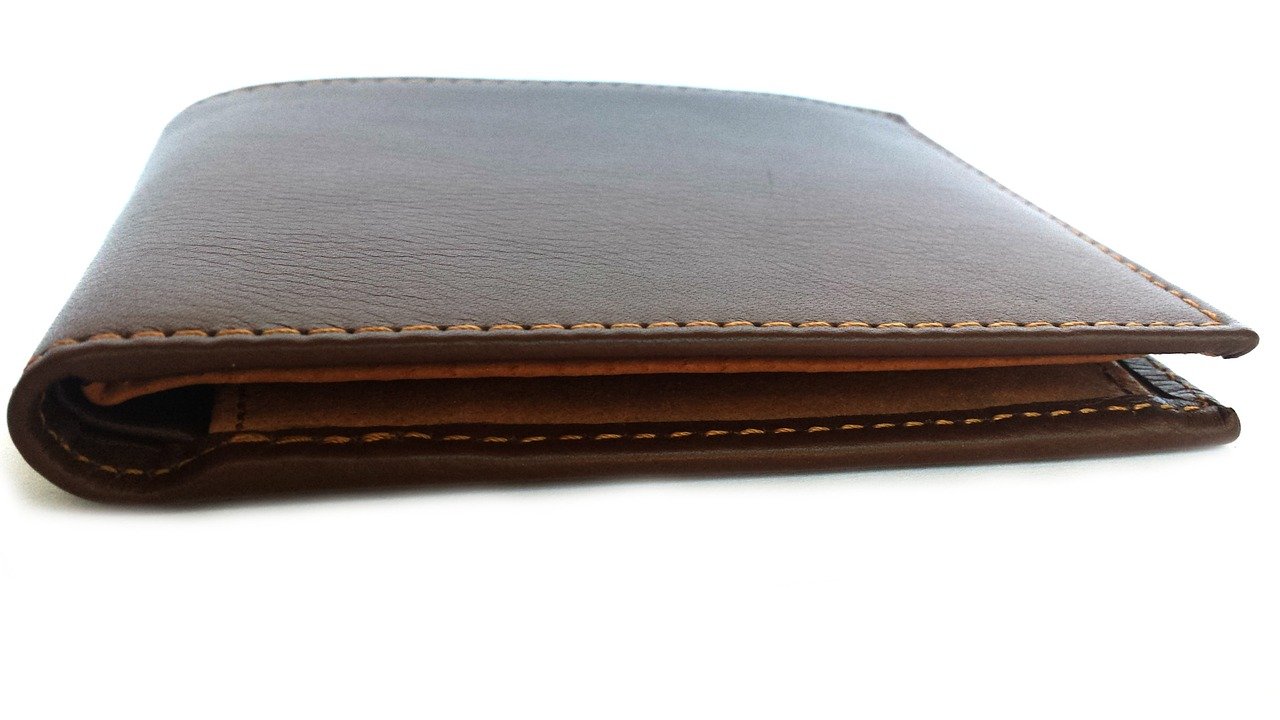In order to maintain the durability and longevity of your handcrafted wallets, it is crucial to understand the importance of regular cleaning and conditioning. By keeping your wallets clean and well-conditioned, you not only preserve their aesthetic appeal, but also ensure that they remain functional and resistant to wear and tear. This article will provide you with essential tips and techniques for effectively cleaning and conditioning your precious handcrafted wallets, allowing you to enjoy their beauty and durability for years to come.

This image is property of pixabay.com.
Benefits of Cleaning and Conditioning Handcrafted Wallets
Handcrafted wallets are often made with high-quality leather, and regular cleaning and conditioning help preserve their quality and longevity. By regularly cleaning and conditioning your wallet, you can prevent dirt and grime from building up, which can damage the leather over time. Additionally, conditioning the leather helps to keep it soft and supple, maintaining its original texture and preventing it from becoming stiff or cracked.
Not only does cleaning and conditioning extend the lifespan of your handcrafted wallet, but it also keeps it looking new and attractive. Over time, natural oils and dirt can accumulate on the surface of the leather, making it appear dull and worn. By cleaning the wallet regularly, you can remove these impurities and restore its natural shine. Conditioning the leather also helps to enhance its color and maintain its vibrancy, ensuring that your wallet looks as good as new for a longer period of time.
When and How Often to Clean and Condition Handcrafted Wallets
The frequency at which you should clean your handcrafted wallet depends on how often you use it. If you use your wallet on a daily basis, it is recommended to clean it every month or so. However, if you only use your wallet occasionally, cleaning it every three to six months should be sufficient.
On the other hand, conditioning should be done every few months, regardless of how frequently you use your wallet. Conditioning helps to replenish the natural oils in the leather, keeping it soft and preventing it from drying out. This step is especially important if your wallet is made of full-grain or top-grain leather, which are more prone to drying and cracking.

This image is property of pixabay.com.
Specific cleaning and conditioning techniques for different types of leather
Different types of leather require different cleaning and conditioning techniques to ensure their longevity and appearance. Here are some specific techniques for cleaning and conditioning popular types of handcrafted wallets:
-
Full-grain leather wallets: Full-grain leather is known for its natural beauty and durability. To clean a full-grain leather wallet, use a soft cloth or brush to remove any surface dust or particles. For conditioning, choose a high-quality leather conditioner and apply it in circular motions with a soft cloth. Allow the conditioner to be absorbed by the leather for a few minutes before buffing away any excess with a clean cloth.
-
Top-grain leather wallets: Top-grain leather is slightly different from full-grain leather as it undergoes a slight sanding or buffing process to remove imperfections. The cleaning process for top-grain leather wallets is similar to full-grain leather. However, when conditioning, it is important to choose a conditioner specifically formulated for top-grain leather to avoid altering its appearance.
-
Suede or nubuck wallets: Suede and nubuck wallets require special care as they are more delicate and susceptible to stains. To clean these wallets, use a soft brush or suede eraser to gently remove stains and dirt. Avoid using water or liquid cleaners as they may leave marks. Conditioning is not required for suede or nubuck leather, but you can use a specialized suede protector spray to maintain their appearance and protect them from stains.
-
Exotic leather wallets: Exotic leather wallets, such as those made from alligator or snakeskin, require extra care due to the unique characteristics of the leather. To clean exotic leather wallets, use a soft cloth or brush to remove any surface dirt. Conditioning these wallets is essential to prevent them from drying out and cracking. Always use a conditioner specifically designed for exotic leather to maintain its natural beauty and texture.
Tools and Materials for Cleaning and Conditioning
To properly clean and condition your handcrafted wallet, you will need the following tools and materials:
-
Soft cloth or brush: Use a soft cloth or a brush with soft bristles to remove surface dust and dirt from the wallet. Avoid using abrasive materials that can scratch or damage the leather.
-
Mild soap or leather cleaner: Choose a mild soap specifically formulated for leather or a leather cleaner to remove stubborn stains or marks. Avoid using harsh detergents or chemical cleaners that can strip the natural oils from the leather.
-
Leather conditioner or moisturizer: Invest in a high-quality leather conditioner or moisturizer to keep the leather nourished and prevent it from drying out. Look for a conditioner that is suitable for the type of leather your wallet is made of.
-
Gloves (optional): If you prefer to wear gloves while cleaning and conditioning your wallet, choose gloves made of a non-abrasive material to protect the leather from any oils or dirt on your hands.

This image is property of pixabay.com.
Step-by-Step Guide to Cleaning and Conditioning Handcrafted Wallets
To effectively clean and condition your handcrafted wallet, follow these step-by-step instructions:
-
Remove all items from the wallet: Take out all cards, cash, and other items from your wallet to ensure a thorough cleaning.
-
Wipe the wallet with a soft cloth or brush: Use a soft cloth or brush to gently remove any surface dust or particles from the wallet. Pay attention to seams, corners, and crevices where dirt might accumulate.
-
Prepare a gentle cleaning solution: Mix a small amount of mild soap or leather cleaner with warm water to create a gentle cleaning solution. Avoid using excessive water, as it can damage the leather.
-
Dampen the cloth with the cleaning solution: Dip a clean cloth into the cleaning solution and wring out any excess liquid. The cloth should be damp, not soaking wet.
-
Gently wipe the wallet in circular motions: Using the damp cloth, gently wipe the entire surface of the wallet in circular motions. Be careful not to scrub too hard, as it may damage the leather. Focus on any areas with stains or marks, applying slightly more pressure if needed.
-
Rinse the cloth and remove soap residue: Rinse the cloth under clean running water to remove any soap residue. Wring out the cloth thoroughly to ensure it is damp but not wet.
-
Allow the wallet to air dry: After cleaning, place the wallet in a well-ventilated area and allow it to air dry completely. Avoid using a hairdryer or placing it under direct sunlight, as excessive heat can damage the leather.
-
Apply leather conditioner or moisturizer: Once the wallet is dry, apply a small amount of leather conditioner or moisturizer to a clean cloth. Gently massage the conditioner into the leather, focusing on areas that may be prone to dryness or cracking.
-
Gently massage the conditioner into the leather: Using circular motions, massage the conditioner into the leather. This helps to ensure that the conditioner penetrates the pores of the leather and nourishes it.
-
Remove excess conditioner and buff the wallet: After applying the conditioner, use a clean cloth to gently remove any excess product. Buff the wallet using a soft cloth to restore its natural shine and smoothness.
Tips for Maintaining Handcrafted Wallets Between Cleanings
To keep your handcrafted wallet in optimal condition between cleanings, consider the following tips:
-
Avoid exposing the wallet to extreme temperatures or direct sunlight: Excessive heat or cold can damage the leather and cause it to crack or fade. Keep your wallet away from heaters, radiators, and windows.
-
Store the wallet in a cool, dry place: When not in use, store your wallet in a cool and dry area, preferably in a dust bag or a cloth pouch. This protects it from dust, moisture, and potential scratches.
-
Keep the wallet away from sharp objects or rough surfaces: To prevent scratches or abrasions, avoid placing your wallet near sharp objects or rough surfaces. Be mindful of where you place it, especially when traveling or in crowded spaces.
-
Avoid contact with harsh chemicals or solvents: Leather is sensitive to chemicals and solvents, which can discolor or damage it. Keep your wallet away from products such as perfumes, hairsprays, and cleaning agents.
-
Regularly check for stains or spills and clean them immediately: Promptly address any spills or stains that may occur on your wallet. The longer a stain sits, the harder it is to remove. Use a damp cloth and gentle motions to clean the affected area, or consider seeking professional cleaning services if the stain persists.
Common Mistakes to Avoid When Cleaning and Conditioning Handcrafted Wallets
To ensure the longevity and appearance of your handcrafted wallet, avoid these common mistakes when cleaning and conditioning:
-
Using excessive water or soaking the wallet: Leather is not resistant to water, and excessive moisture can cause it to warp or lose its shape. Avoid soaking your wallet or using excessive amounts of water during the cleaning process.
-
Using abrasive materials or harsh cleaners: Rough brushes, abrasive sponges, or harsh cleaners can scratch or damage the leather surface. Stick to soft cloth or brushes with gentle bristles to avoid causing any harm.
-
Skipping the conditioning step: Conditioning is an essential part of caring for leather wallets. It helps to restore moisture and replenish the natural oils that can be lost through regular use. Skipping this step can result in dry and cracked leather over time.
-
Using improper leather conditioner or moisturizer: Not all leather conditioners are created equal. Using a conditioner that is not suitable for the type of leather your wallet is made of can alter its appearance and texture. Always choose a conditioner specifically formulated for the type of leather you are working with.
-
Over-conditioning the wallet: While conditioning is important, using too much conditioner can leave a greasy residue on the leather surface. Follow the manufacturer’s instructions and use the recommended amount of conditioner to maintain a balanced level of moisture in the leather.
Different Types of Handcrafted Wallets and their Cleaning Requirements
Depending on the type of leather used, handcrafted wallets may have different cleaning requirements. Here are some cleaning tips specific to different types of handcrafted wallets:
-
Full-grain leather wallets: Full-grain leather is known for its durability and natural beauty. For cleaning, follow the general cleaning steps outlined earlier in this article. Conditioning with a suitable leather conditioner will help maintain its supple texture and prevent drying.
-
Top-grain leather wallets: Top-grain leather undergoes a slight sanding process, making it more resistant to stains and scratches. Cleaning and conditioning for top-grain leather are similar to full-grain leather, with the added consideration of using a conditioner specifically formulated for top-grain leather.
-
Suede or nubuck wallets: Suede and nubuck leather require special care due to their delicate nature. To clean these wallets, use a soft brush or suede eraser to gently remove stains or marks. Avoid using water or liquid cleaners, as they can leave watermarks on the suede or nubuck. Conditioning is not necessary for these types of leather, but you can use a suede protector spray to maintain their appearance.
-
Exotic leather wallets: Exotic leather wallets, such as alligator or snakeskin, require unique cleaning methods. To clean these wallets, use a soft cloth or brush to remove surface dirt. Conditioning is crucial to prevent the exotic leather from drying out and cracking. Use a conditioner specifically designed for exotic leather to maintain its natural beauty and unique texture.
DIY vs. Professional Cleaning and Conditioning
When it comes to cleaning and conditioning handcrafted wallets, you have the option to do it yourself (DIY) or seek professional services. Each approach has its pros and cons:
Pros of DIY cleaning and conditioning:
- Cost-effective: DIY cleaning and conditioning can save you money compared to professional services.
- Convenience: You can clean and condition your wallet at your own convenience, without having to take it to a professional.
Cons of DIY cleaning and conditioning:
- Lack of expertise: Cleaning and conditioning leather requires knowledge and experience to avoid damaging the wallet. Without proper knowledge, you may inadvertently cause harm to the leather.
- Risk of using improper products: Using the wrong cleaning or conditioning products can alter the appearance or texture of the leather, potentially ruining the wallet.
- Time-consuming: DIY cleaning and conditioning can be time-consuming, especially if you have multiple wallets or limited experience in the process.
Benefits of professional cleaning and conditioning:
- Expertise and experience: Professional leather cleaners are trained in properly cleaning and conditioning handcrafted wallets. They have the knowledge and expertise to handle different types of leather and address any specific cleaning requirements.
- Specialized equipment and products: Professional cleaners have access to specialized equipment and products that may not be readily available to the average consumer. This enables them to provide a more thorough and effective cleaning and conditioning process.
- Time-saving: By leaving the cleaning and conditioning to professionals, you can save time and ensure that your wallets receive the proper care they need.
When to consider professional services:
- If you have valuable or sentimental handcrafted wallets that require delicate cleaning and conditioning, professional services can give you peace of mind, knowing that your wallets are in the hands of experts.
- If you have limited time or prefer to leave the task to professionals, seeking their services allows you to focus on other priorities while ensuring your wallets are properly cared for.
Conclusion
Cleaning and conditioning handcrafted wallets are essential for preserving their quality, appearance, and longevity. By regularly cleaning and conditioning your wallet, you can extend its lifespan, maintain its original texture and suppleness, and keep it looking new and attractive for years to come. Following the step-by-step guide and utilizing the appropriate tools and materials will ensure that your handcrafted wallet receives the proper care it deserves. Whether you choose to clean and condition your wallet yourself or opt for professional services, investing time and effort in its care will reward you with a wallet that not only functions well but also looks impeccably stylish.
